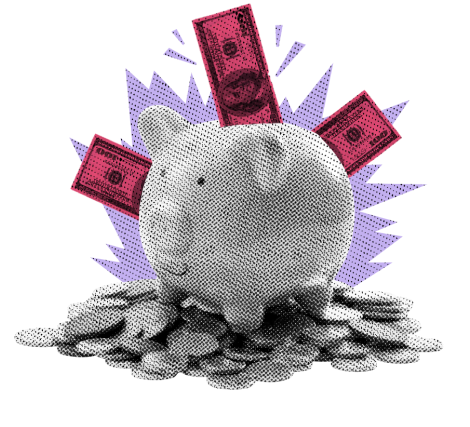MY HOT TAKES
-
JPM isn’t just a bank—it’s a proxy for the whole financial system
-
If you think banks are boring—you’re not paying attention
-
Dimon is one of the most influential voices in markets today
-
Investment banking is still in a holding pattern until rates settle
-
Expect strong commentary, even if Q2 results themselves will be mixed
-
You can quote me: “If you think JPMorgan’s just another bank, you’re missing the point—it’s the economy’s x-ray.”
And just like that. The official, unofficial start of Q2 earnings season begins just hours from now (or earlier this morning, depending on when you get to reading this). Banks kick it off, with all eyes on the most popular bank with the most popular chief. That is, of course, JPMorgan Chase and its Helmsman Jamie Dimon.
JPMorgan Chase is a diversified bank that operates globally. It provides retail banking to working folks like you and me (you can probably still get a lollipop at some local branches) as well as commercial banking, investment banking, asset management, home finance, institutional trading, wealth management, credit cards, and a whole lot more. You could say that it is a “big bank” with confidence. With a market cap of $802.3 billion, it sits in the number 11 slot on the S&P 500 index, making it the largest bank on the big index. It is the largest bank by assets under management (AUM) and market capitalization in the world. It’s big, so obviously, astute investors in any sector would like to know how the bank is doing and what its CEO has to say.
JPM breaks its business down into 4 reportable business units: Consumer / Community Banking, Asset / Wealth Management, Commercial Banking, and Corporate & Investment Banking. Each segment has its own specific nuances, success drivers, and contributions to the overall health of the company.
The largest unit, Consumer / Community, makes up about 40% of the company’s net revenues ($18.3 billion last quarter). This unit makes its money through traditional banking service. You know, like savings and checking accounts. In addition, the unit is responsible for credit cards, auto loans, home loans, and even small business banking. The basic business model there is to take deposits from individuals and small businesses and lend them out. The profit from those loans is then used to pay the interest on deposits. Deposits, because they can be withdrawn at any time are considered short term borrowing. Yes, the bank is borrowing money from you! Typical loans for the bank would be home mortgages, auto loans, and credit cards. Can you see where this is going? The bank borrows money from you and me and pays us a small interest rate (if any), and then loans out the funds for a hopefully much higher rate.
Because JPMorgan is an A1 / A rated bank, it is considered lower risk, and therefore does not have to pay depositors high interest rates. The loans it makes however are higher risk. Auto loans and mortgages all have the risk of default and those risks change with the health of the economy. Because the loans come with higher risks, JPMorgan earns more return. Additionally, because these loans have longer maturities, the bank is able to charge more for term premium; the longer the loan the higher chance of something going wrong.
JPMorgan pays like 0.02% annual percentage yield (APY) in its premier savings accounts. It can then loan them out to mortgage borrowers at 6.75% (average 30-year rates today). The bank earns the difference which is called net interest income. That is the most closely watched number on any bank, commercial, regional, or community. Now, before you get all hot and bothered about how much the bank earns on us, you have to remember that it is providing a service, and it is taking risks. Those wagers don’t always pay off and the bank takes losses on bad loans. Investors can monitor the bank's lending prowess by looking at its provisions for loan losses. That gets adjusted based on the bank’s assessment of potential losses, which are affected not just by lending success but also economic conditions. For example, in Q1, JPM’s loan loss provision was $3.3 billion on $1.36 trillion in outstanding loans.
So, as you can see, the amount of deposits and outstanding loans combined with the slope of the yield curve impact a bank’s ability to earn net interest income. Its ability to manage risk and the state of the economy affect the quality of those loans. So, we would like to see JPMorgan grow deposits, increase lending, and attain higher net interest margins while minimizing charge offs for bad loans. This same high-level analysis can be applied to all the traditional banks which we will hear from in the days ahead.
As I described earlier, JPMorgan is a diversified bank with other business units. The health of those business units are assessed slightly differently. JPMorgan’s second largest business unit is its Commercial & Investment Banking (CIB) business which makes up just under 40% of its net revenues. CIB makes money in trading, investment banking, clearing, and prime services. The former 2 are closely watched. Referred to as the markets segment, the bank makes trading revenue from equities, fixed income, currencies, and commodities (the latter three are grouped together in an industry acronym FICC trading). The markets group earns commissions from execution and proprietary trading. Generally, when markets are more active, firms are able to make more commissions due to volume, and earn bigger profits due to wider bid/ask spreads.
Investment banking, which includes advisory, capital raising, mergers & acquisitions, and underwriting can earn HUGE fees. Except for underwriting, these big fees are earned without the bank risking capital. Investors like that. 😉However, like everything else, those HUGE fees are not always easy to get. Contrary to the markets group which earns more money in volatile markets, investment banking activities tend to slow down. As you might guess the bulk of investment banking revenue is based on deal flow and success rate. For example, many pending transactions were put on hold in early Q2 as markets were roiled by the President’s tariff rollout. That had a direct impact on the revenues of the group. Interest rates are also a big factor in its success. For example, if client companies expect interest rates to go lower, they would likely decide to hold off on tapping debt markets until rates move lower. Similarly, commercial real estate owners may put off sales waiting for interest rates and cap rates. This environment persisted in 2023 and 2024. Though this year got off to a slow start, it is expected to pick up later this year. This basic analysis can be applied more broadly to investment banks and other diversified banks.
JPM’s Asset & Wealth Management does as its name implies; it manages money for institutional clients as well as high net worth and ultra-high net worth individuals and families. Because the bulk of the revenues come from Assets Under Management (AUM) based fees, its success is highly reliant on two major drivers: market gains and net asset flows. If markets perform well, existing AUM grows and collected fees go up (it’s just math, silly). Additionally, if the company attracts new funds to manage, AUM also grows and fees go up (also, more math, silly). Think: 1% on a bigger number is… er, a bigger number. 🧐💡Now, of course, if managers do a good job, AUM will grow and vice versa if not. Even though it is a smaller unit, investors love this one because it does not require balance sheet risk, and if managed properly, income streams are very stable. That is why companies with higher exposure to asset management command higher valuation multiples. For example, JPMorgans current PE is around 14x while Blackrock (considered a pure asset manager) commands a higher 27x multiple. Morgan Stanley, which is more heavily focused on asset management than JPM has a PE of around 17x.
JPMorgan’s smallest operating unit Corporate / Private Equity makes up around 10% of the company’s adjusted revenue, but it has grown quite a bit in the past few years. This unit invests in private companies and growth-stage businesses as well as provides private credit financing and co-investment opportunities. That said, the company's ability to source good deal flow as well as its ability to tap into funding sources determines the unit’s financial success. A metric for its success would be internal rate of return (IRR), which depends on its ability to collect interest income and capital gains (from liquidity events). A low interest rate environment along with strong economic conditions are macro success drivers for this unit. Additionally, stable capital markets make exit strategies more likely and successful.
JPMorgan is not only the largest non-government bank, but it also provides us a very diversified sample of the activities that make up most of the broader Financials sector (except insurance). As you can see, a variety of factors go into determining the hits and misses of its operating units and ultimately, the company itself. Many of these same factors will determine the successes of companies not only in its sector but in all the other sectors that are locked and loaded to report in the weeks ahead. That is probably why everyone wants to know how JPMorgan Chase did in Q2 and even more importantly, what its superstar CEO has to say about future prospects, the economy, and really anything about anything else. Pay attention and sharpen your pencils, ‘cause here we go! 🏃
YESTERDAY’S MARKETS
Stocks gained yesterday as investors remained optimistic that all the weekend tariff talk would be resolved, even as the rhetoric picked up. Bond yields continued to edge higher along with tariff talk. Bitcoin closed above 120,000 for the first time because everybody wants some–and no other discernable reason.


.png)

